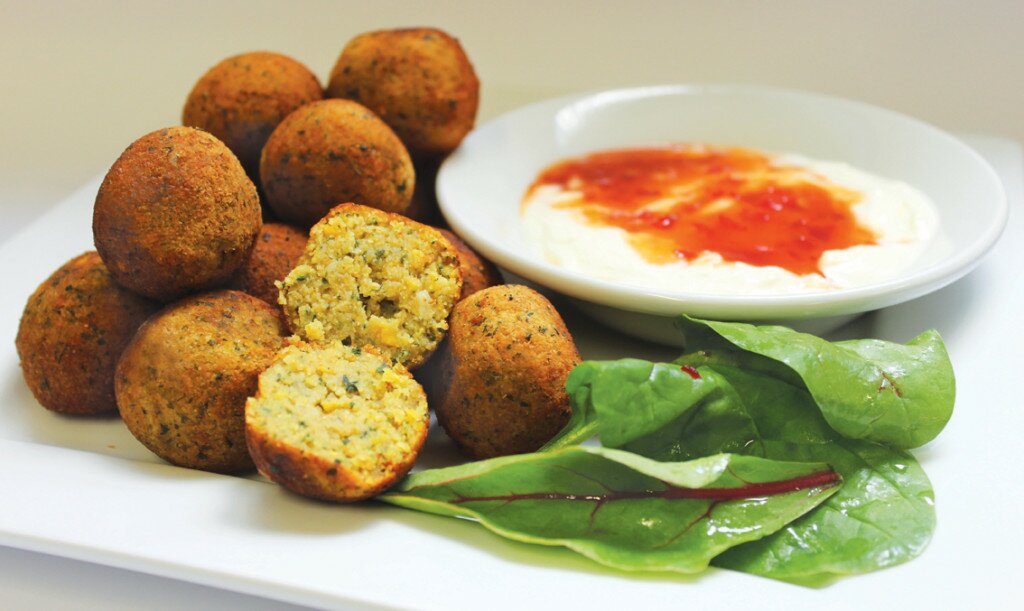FOOD
APPLICATIONS
Use of Australian Sweet Lupin in Foods
We now know that lupins are very good for you.
They are high in protein and antioxidants, low in carbohydrates and are gluten and GMO-free. Adding lupins to your diet will enhance your bowel health, control your blood sugar, reduce your blood pressure, suppress your appetite helping to control your weight while lowering your cholesterol.
Great; but do they taste any good?
Absolutely!
Lupins are used to make a variety of foods; sweet and savoury including:
-
Everyday Nutritious Meals
Lupins are perfect for falafel; there is no soaking or boiling involved – it’s much quicker and easier than preparing traditional forms of falafel.
Try our delicious Moroccan Roast Pumpkin and Lupin Superfood salad using lupin flake:
Click here for recipe -
Baked Foods
Adding lupin flake can not only make baked products look fantastic, but considerably more nutritious. Just substituting 20% of your normal flour with lupin flake in your bread can increase protein by 54%, fibre by 340% while reducing glycaemic load (carbs) and energy density (by 32%).
-
Biscuits and Cakes
When cooking with sugar you can substitute even more of your wheat flour with lupin flake. Sweet indulgences are all about “naughty but nice”; why not make it “not so naughty…”
Have a look at our recipes that keep the “nice”, but are also gluten free…
-
Traditional fermented foods
Australian sweet lupin is an excellent substrate for fermentations, which are used to make foods such as tempe, miso and traditional soy sauces.
Tempe:
Australian sweet lupin is an excellent substrate for fermentations which are used to make foods such as tempe, miso and traditional soy sauces because more proteins and complex carbohydrates are broken down into simpler and more digestible organic structures.
Lupin tempe is equal to if not better in nutritional terms compared with soy tempe.
Miso:
In one study, a Japanese expert panel found miso made from Australian sweet lupin more acceptable than soy miso for colour and overall appearance and as acceptable for flavour and texture.
Cunha, A.C. and M.L. Beira da Costa, 1990. Lupinus luteus as a potential raw material for miso production. In: D. von Baer (Ed.) Proceedings 6th International Lupin Conference, Temuco-Pucon, November 1990, pp32. Associacion Chilena del Lupino,Temuco.
-
DAL
-
SUNLIT MUESLI BARS
-
SAUCES
Australian sweet lupin could be used to make sauces similar in flavour and texture to the traditional soy sauces of Japan and China. Australian sweet lupin has been found to be a better substrate than soya beans to make Korean paste and sauce.
Lee, Y.P., T. Mori, S. Sipsas, A. Barden, I. Puddey, V. Burke, R. Hall, J. Hodgson, 2006. Lupin-enriched bread increases satiety and reduces energy intake acutely. American J Clinical Nutrition 84: pp 975-980.
Hung, T.V., M. Papolais, V. Nithianandan, H.H. Jiang, K. Versteeg, 1990. Utilisation of lupin seeds for human consumption. ‘Food Pacific’ Convention, Gold Coast, May 1990, pp. 13-15. AustralianInstituteofFoodScience andTechnology,Australia.
Worm, M.A. and M.L. Beirao de Costa, 1990. Lupin as a raw material for shoyu production. In: D. von Baer (Ed.) Proceedings 6th International Lupin Conference, Temuco-Pucon, November 1990, 60-67. Associacion Chilena del Lupino,Temuco.
-
LUPIN CHAPATTI
Lupin flour can substitute up to 50% of the Atta flour when making chappati creating a “complete super food” delivering on taste, nutrtion and good health.
The hulls can be milled/ground into coarse bran suitable for use as (crude or bulk) fibre enrichment of bread, which currently occurs in Australia and in Europe. Notably, most fibre enrichmentingredients are based on wheat fibre, and there are very few gluten-free options available for the ‘coeliac market’. Lupin hull fibre can fulfil this ‘niche’ market.
Evans, A.J., 1994. The carbohydrates of lupins, composition and uses. pp 110-114. IN: M. Dracup and J. Palta (Eds). Proceedings of the First Australian Lupin Technical Symposium. Western Australian Department of Agriculture,South Perth.




 © 2013 Lupin Foods Australia | Website by Zap IT |
© 2013 Lupin Foods Australia | Website by Zap IT | 


